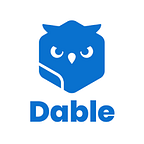Targeting with Context — Why Contextual Advertising is Key to Business Growth
As third party cookies are making their way out with the rising privacy issue, contextual targeting has gained back the spotlight.
Contextual targeting refers to the method of placing relevant ads that match the content of a website through factors like keywords, topics, or categories without relying on third-party cookies. An example would be showing cosmetic ads to a user who is reading beauty articles. This automatic ad placement enables marketers to focus on the actual content people consume. In other words it provides ads only based on what’s being read respecting the user’s privacy. Study finds that by 2027, the global contextual advertising market is expected to reach US$376.2 Billion.
The Difference between Contextual and Behavioral Targeting
Behavioral targeting is a marketing method that places ads based on the user’s online behavior. That is, it shows personalized ads by tracking behavioral information such as the user’s location, interest, gender, and digital footprints. Behavioral targeting targets consumers based on their previous actions, and it doesn’t show ads that are most relevant to the content that is currently being viewed as much as contextual targeting does.
Contextual targeting is designed to place the most relevant ads to the desired user at the right context. It places ads on websites by analyzing the keywords of the web page, which helps determine if the content relates to the ad. Contextual targeting also has the ability to find an audience beforehand, meaning it doesn’t let the ad become an afterthought and miss out on a crowd of viewers.
Below we explain the advantages of contextual targeting and how it will help grow your business.
How Contextual Targeting drives Business Growth
1. Engages Consumers through Relevant Ads
At times users prefer context more. The ‘Contextual Targeting Handbook’ written by IAB Australia found that 86% of consumers prefer digital ads to appear alongside relevant content. Contextual targeting works based on the context of what is being read and consumers value seeing ads that are related to the topics or articles they’re consuming online.
The IAB also states that users are more receptive to ads placed in a contextually relevant environment. By using the right strategy and technology, ads can be targeted to the most relevant user at the proper place and time, which not only captures the attention, but also increases consumer engagement through effective brand messaging.
2. Protects User Privacy
Google’s removal for supporting third-party cookie data and Europe’s General Data Protection Regulation (GDPR), has blocked advertisers from tracking or collecting third-party data, which demands greater privacy and data transparency. Based on a study by IAS, 94% of consumers care about their online data privacy and the growing privacy regulation and consumer concerns are calling for a shift towards contextual targeting.
Contextual targeting uses contextual information of a website to find the most suitable ads that will match the content on a website, so it is privacy safe as it does not require third-party data or rely on the user’s behavioral information to display ads. When people are assured that their privacy is protected they are able to increase their trust towards marketers.
3. Increases Brand Safety
While it is important to promote brands, advertisers must also consider brand safety. According to the aforementioned IAB report, more than 7 out of 10 consumers stated their perception of an online ad is impacted by the surrounding content on the page. Although most brands are careful to avoid placing ads next to harmful or inappropriate content, sometimes mistakes happen and not all content aligns with every brand’s message. So marketers have been searching for new solutions to maintain brand credibility.
Contextual targeting used to be an old-time targeting method, but it has continued to evolve with technological advances and higher industry standards for contextual categorization. Through natural language processing (NLP), contextual targeting understands the nuances of context and language, which allows precise content classification. And using such nuanced contextual targeting, enables advertisers to gain back control on their campaign and ad spend and choose the best environment for placing their ads.
4. Convenient and Economical Execution
Behavioral targeting or search advertisements requires a lot of resources and money because one must constantly find better ways to optimize the ad’s performance. On the other hand, contextual targeting enables easy implementation, helping businesses work efficiently and reach their desired goal. By evaluating content, the AI machine learning tool activates targeting solutions to display ads that best suit the website’s context and that perform well.
Contextual targeting saves a significant amount of time because it doesn’t need a person to constantly monitor and optimize ad performance over time. It is also economical because it doesn’t require additional top up to achieve higher performance and can secure performance with one budget. Lastly, it is sustainable, not only because it’s time saving and low-cost, but also because it can work with a small number of people.
To help marketers prepare for the post-cookie apocalypse, Dable, the global native ad platform, has a 6-year history of developing contextual targeting capabilities through its own NLP and AI machine learning technologies. Partnered with over 3,000 premium publishers, Dable carries a lot of contextual information and is experienced in placing the most relevant ads to users by analyzing content on thousands of publisher websites.
In addition, Dable is making various efforts to better streamline contextual targeting such as:
- increasing ad relevance by deep-learning advertiser’s data (ex: title, thumbnail image, landing page) with article data (content, title, upload date)
- actively using more first-party data to maintain good performance
- improving targeting abilities by showing ads based on their performance or by integrating the performance of a specific ad inventory.
Dable demonstrates contextual maturity to provide uninterrupted performance and can help marketers to easily shift to a cookieless future.
For more information on contextual targeting or getting started with Dable Native Ad, please contact ad@dable.io.
